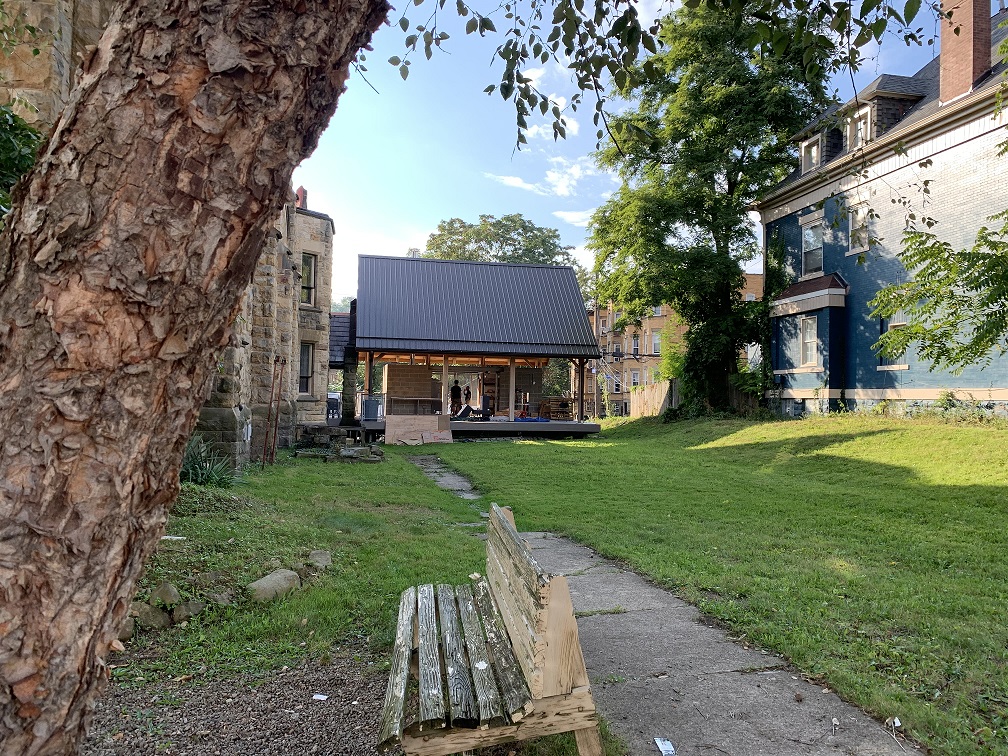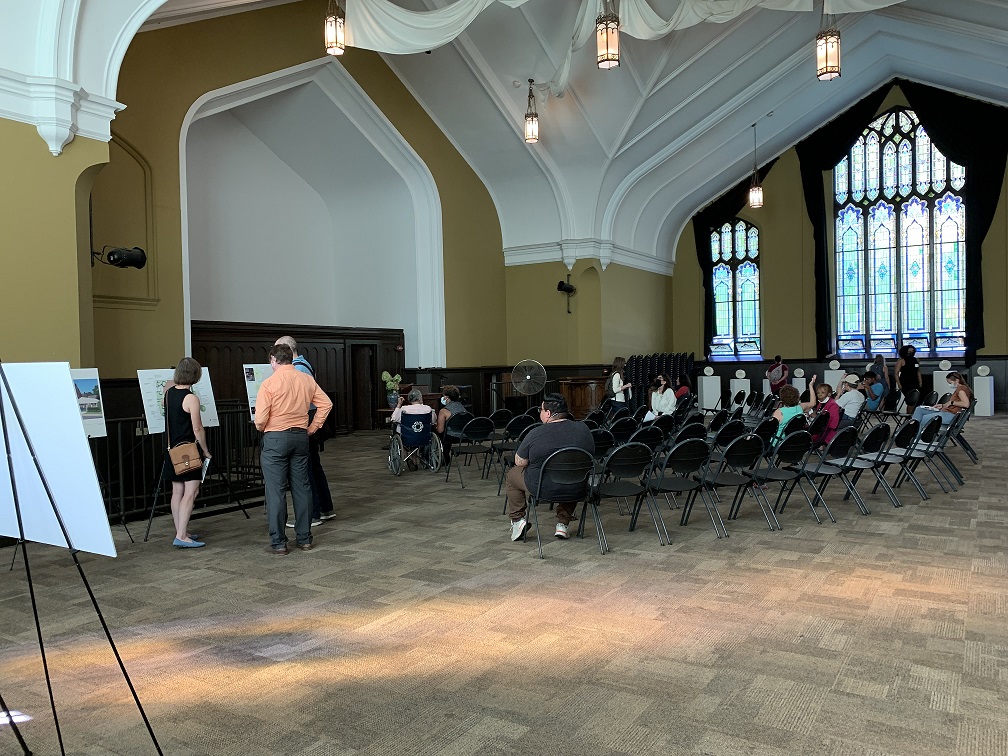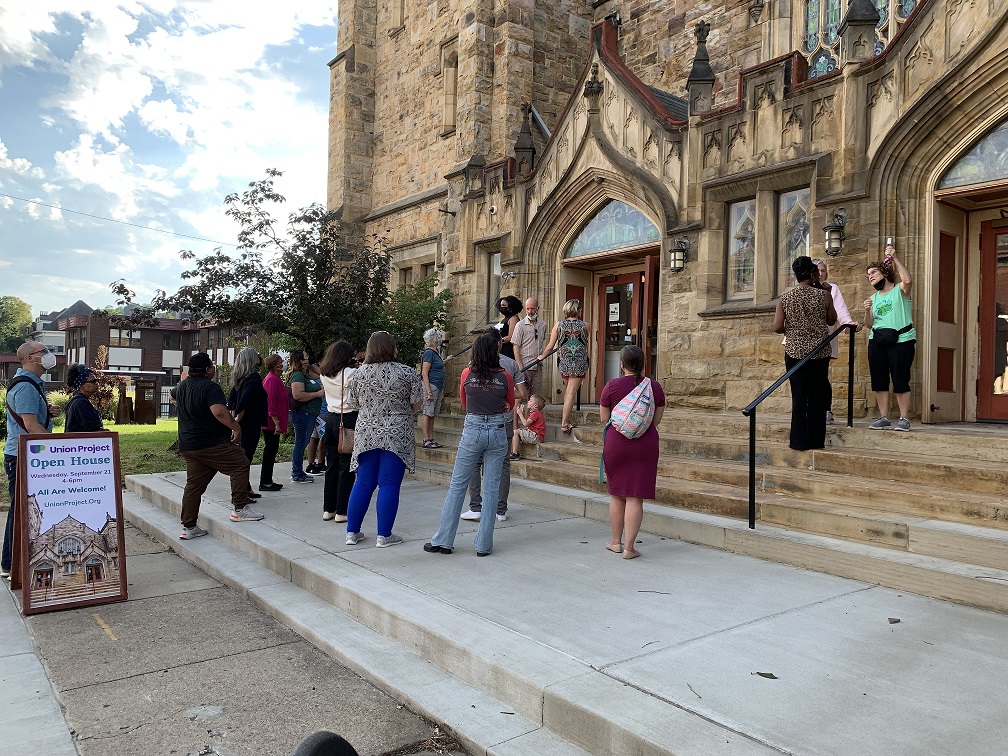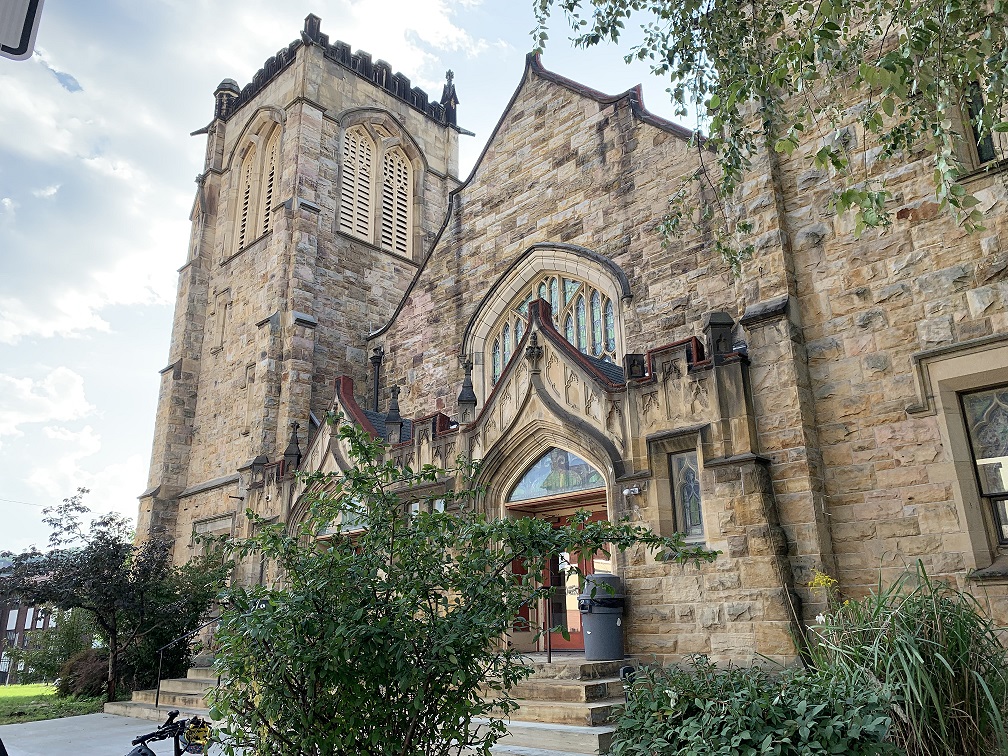At the start of the 20th century, Pittsburgh’s Highland Park neighborhood was becoming a bustling place. The leaders of the United Presbyterian Church decided to build a new church, which became the Second United Presbyterian Church, at the corner of North Negley and Stanton Avenues in the city’s east end in 1903.
Second United (PA-SHARE Resource #2019RE05800) was one of the three churches, along with Highland Avenue Presbyterian (no longer extant) and St. Andrew’s Episcopal, that were built in the expanding neighborhood. These institutions and the Fulton School were anchors and focal points in the Highland Park neighborhood that was overwhelming residential in character.

Like the other churches in the Highland Park Historic District (PA-SHARE Resource #1993RE00095), Second United Presbyterian’s Gothic Revival style of architecture was common for Christian religious structures at the turn of the twentieth century. It is roughly rectangular in plan, with a steep gabled roof – flanked in front by two square towers. The building also has an education wing, built in a typical Akron-type semicircular floor plan. This unique shape required a complicated faceted roof.

The completion of the new, larger East Liberty Presbyterian Church in the early 1930s attracted many of the congregants of Second United Presbyterian Church to worship there instead. The former Shadyside Baptist Church took over the building in the 1930s, changing their name to East End Baptist Church. The congregation eventually dwindled and thus the building fell into disrepair by the 1990s.
The sheltered church quickly became a concern to community leaders and neighbors. Its prominent location along North Negley and Stanton Avenues made its condition well noticed by passersby. The Union Project formed in 2002 to explore the purchase, rehabilitation, and reuse of the former church. The nonprofit community arts organization evolved to one that provides varied art programming focusing on ceramics and artist studio space and utilizes the former sanctuary space for community use.
A new era with the Union Project
Since the Union Project assumed ownership of the building, many of the deferred maintenance and capital needs of the building were planned and addressed. The organization solicited a partnership with the PHMC’s Keystone Historic Preservation grant program to address two of the most important character-defining features of the building: repair of the monumental stained-glass sanctuary windows and the building’s massive slate roof.
Other key projects included cleaning the ashlar cut stone building, leveling the sloped sanctuary floors (the organ, pews and altar were removed prior to assumption of ownership) and construction of a free-standing kiln house at the rear of the property. The latter two projects were necessary to improve the programming of the building.

Planning for Improvements
The Union Project is certainly not a static organization and recognized that their facility and its some 13,000 users would benefit from additional projects that might improve safety, comfort and preservation of the building.
In 2020, with the assistance of a Keystone Historic Preservation planning grant, the Union Project undertook key components of a master plan that would study key site features such as the stability of crenelated parapet wall, requirements for an ADA accessible ramp at the front of the building and other aspects to their landscape use and most importantly, ways to improve their energy consumption. An evaluation of their current HVAC and lighting needs not only enhanced the historic features of the building but also will regulate the comfort of its users.
With the culmination of this study, the Union Project invited its neighbors to learn more about the history of the former Second United Presbyterian Church and to share the planned improvements with their next exciting phase. The open house included project boards from the various consultants, tours of the facility and series of speakers (including me!) highlighting not only the Union Project’s mission, but its facility and the importance of its preservation. I was honored to be invited to their open house on September 21st with Preservation Pittsburgh and Councilwoman Deborah Gross.

Roof Preservation Continues
The Union Project leveraged the planning documents prepared as part of their 2020 planning grant to leverage another Keystone grant in the construction category for this current round. The plan focused their attention on two critical areas for repair: the lobby roof and the northeast and south towers for both roof replacement and masonry repointing.

What is fascinating about the Union Project’s most recent grant project is its direct correlation to consistent planning and assessment of the building systems.
The initial roof assessment was conducted in October of 2015, the lobby roof was noted as a primary area for repair or replacement but that the tower roofs had several years of serviceable life yet with minor repairs. With the 2020 Keystone grant, TMR Roofing reassessed the conditions. The continued intensity of more extreme weather and increasing freeze-thaw cycles that are now constant through Pittsburgh winters, has accelerated the deterioration of the roof areas in the front of the building. The already marginal lobby roof and both the northeast and southeast tower valleys required immediate attention.
Masonry Repairs to the Towers
The masonry parapets were also assessed as part of the work supported by the 2020 PHMC Keystone Planning Grant. The evaluation noted that overall, the parapets are in fair to poor condition. They also referenced the impact of annual freeze-thaw cycles in accelerating the deterioration as water continues to infiltrate areas with mortar failure. This continued water infiltration will lead to worsening stone displacement which could potentially cause safety issues.
Franco Associates recommended that repairs are made sooner than later to stop the infiltration of water into the masonry and secure the structure. The Union Project engaged Graciano for a more detailed estimate that will include rebuilding the NE corner finial, repointing the sandstone and re-caulking the skyward facing joints of both towers.

Want to Learn More?
The Union Project is available to all ceramic and other craft-based artists in the Pittsburgh community. To learn more about their classes and other programming, visit their website at unionproject.org
Keystone Grant Opportunities
PHMC will again offer Keystone Historic Preservation Grants this fiscal year to nonprofit organizations and municipal governmental agencies who own and operate historic sites throughout the Commonwealth.
Like the former Second United Presbyterian Church, the property must be eligible for listing in or listed in the National Register of Historic Places. Application opened on December 1st with a due date of March 1, 2023. Learn more about the eligibility information and guidelines here on the PHMC website.
PA-SHPO staff will again offer dedicated webinars to assist prospective applicants with the submittal process:
Construction Project Grants: Anyone interested in capital construction project grants should attend on Wednesday, January 18, 2023 at 1:00 PM. Please register here to receive the webinar information.
Planning Project Grants: Anyone interested in the planning project grants should opt for the Thursday, January 19, 2023 program, also at 1:00 PM. Please register here to receive the webinar information.
Can’t decide which you should attend? Feel free to register for both webinars. This flyer has more information.
Comment Policy
PHMC welcomes and encourages topic-related comments on this blog. PHMC reserves the right to remove comments that in PHMC’s discretion do not follow participation guidelines.
Commenters and Comments shall be related to the blog post topic and respectful of others who use this site.
Commenters and Comments shall not: use language that is offensive, inflammatory or provocative (this includes, but is not limited to, using profanity, obscene, or vulgar comments); disparage other commenters or people; condone illegal activity; identify the location of known or suspected archeological sites; post personal information in comments such as addresses, phone numbers, e-mail addresses or other contact details, which may relate to you or other individuals; impersonate or falsely claim to represent a person or an organization; make any commercial endorsement or promotion of any product, service or publication.
If you would like to comment on other topics not related to this blog post but related to PHMC, please fill out the PHMC Contact Us Form.
Hi, Karen! I loved this article, partly because I’ve been a big fan of the Union Project since its inception, and partly because of my husband’s minor role in the window restoration. I worked at the Bayer Center for Nonprofit Management with Abby Sandel, who served on (I believe) the founding board of the Union Project. I was impressed with the requirement of a “significant” annual donation by all board members, and that’s when I first heard the phrase, “Give, Get or Get Off” applied to board members. I also loved their model of window restoration: use experienced stained glass artists to teach stained glass making and repair classes. For hands-on experience, class members restored some of the church’s windows – what an innovative approach! My husband took the class (our c. 1900 house has many stained and leaded glass windows!) and restored one of the windows. He loved the experience, and I’m proud that he was a very small part of the restoration of this grand old building. Again, thanks for the article. The Union Project is certainly a neighborhood asset!